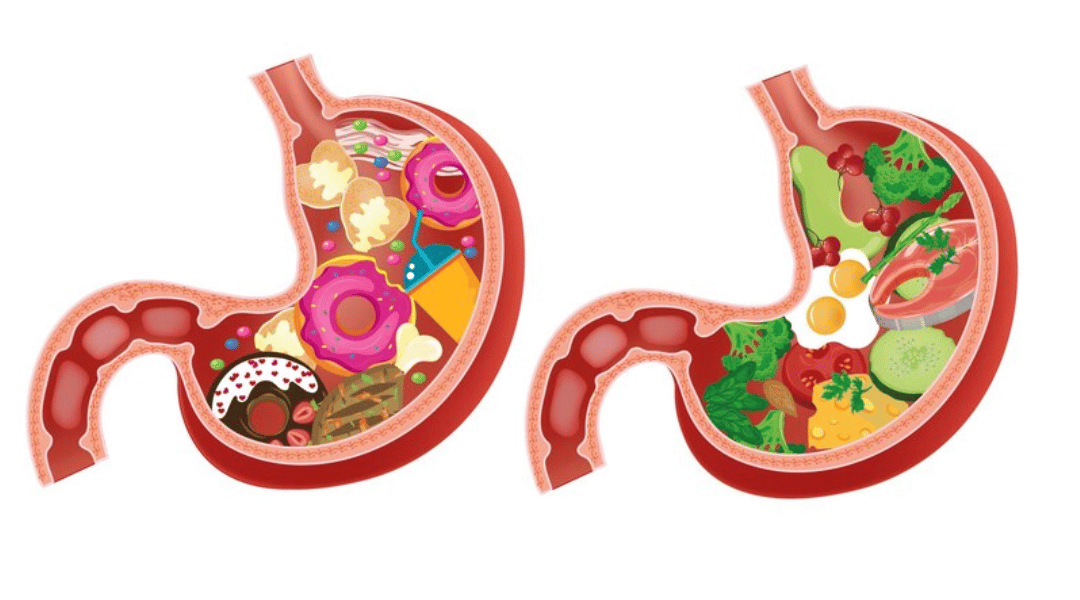Definition of pre diabetes
Pre-diabetes is a condition in which blood sugar levels are higher than normal but not high enough to be classified as type 2 diabetes. It serves as a warning sign and an opportunity for early intervention to prevent the development of full-blown diabetes.
Introduction
Managing pre-diabetes through a healthy diet is crucial for preventing the progression to type 2 diabetes. A diet for pre diabetes focuses on balancing blood sugar levels, maintaining a healthy weight, and promoting overall well-being. It emphasizes nutrient-dense foods, such as whole grains, lean proteins, fruits, vegetables, and healthy fats. Limiting processed foods, sugary beverages, and refined carbohydrates is essential. Regular physical activity and portion control are also key components. By adopting a pre-diabetes diet, individuals can take proactive steps towards better health and reduce their risk of developing diabetes.
Importance of a healthy diet for pre diabetes
Adopting a healthy diet is crucial in managing pre-diabetes because it plays a significant role in regulating blood sugar levels and preventing the progression to type 2 diabetes. A well-balanced diet can improve insulin sensitivity, promote weight management, and reduce risk of complications associated with diabetes. By making dietary changes, individuals with pre-diabetes can positively impact their overall health and potentially reverse condition.

Pre diabetic diet for picky eaters
Designing a pre-diabetic diet for picky eaters can be challenging, but it is crucial for managing blood sugar levels. Focus on incorporating a variety of nutrient-dense foods. Include foods high fiber options such as whole grains, legumes, and non-starchy vegetables. Incorporate lean proteins like poultry, fish, and tofu. Opt for healthy fats from sources like avocados and nuts. Limit processed foods, sugary drinks, and refined carbohydrates. Experiment with different cooking methods and seasonings to enhance flavors and make meals more appealing. Seek guidance from a registered dietitian to ensure a well-balanced and enjoyable diet plan.
Understanding diet for pre diabetes
Pre-diabetes is a condition characterized by higher-than-normal blood sugar levels, but not yet reaching threshold for a diabetes diagnosis. It serves as a critical warning sign, indicating an increased risk of developing type 2 diabetes. Factors such as obesity, sedentary lifestyle, poor diet, and family history contribute to its development. Managing pre-diabetes involves adopting healthy lifestyle changes like regular exercise, balanced diet, weight management, and monitoring blood sugar levels. Early detection and intervention are crucial in preventing or delaying the progression to full-blown diet for pre diabetics and its associated complications.

Explanation diet for pre diabetes and risk factors
Pre-diabetes is a condition that occurs when blood sugar levels are higher than normal but not high enough to be classified as type 2 diabetes. It serves as a warning sign, indicating an increased risk of developing diabetes in the future. People with pre-diabetes have impaired glucose tolerance and insulin resistance.
Risk factors for pre-diabetes include:
- Weight: Being overweight or obese significantly increases risk.
- Sedentary lifestyle: Lack of physical activity or leading a sedentary lifestyle contributes to risk.
- Family history: Having a close family member with diabetes raises chances of developing pre-diabetes.
- Age: The risk of pre-diabetes increases with age, especially after 45 years.
- Ethnicity: Certain ethnic groups, such as African Americans, Hispanic/Latino Americans, Native Americans, and Asian Americans, have a higher predisposition to pre-diabetes.
Blood sugar levels & significance
Blood sugar levels, also known as blood glucose levels, indicate the amount of sugar (glucose) present in the bloodstream. Understanding blood sugar levels is crucial in assessing and managing pre-diabetes. Two primary measurements used to monitor blood sugar levels are:
- Fasting blood sugar (FBS): This test measures blood sugar levels after an overnight fast (typically 8 hours). A fasting blood sugar level between 100-125 mg/dL (5.6-6.9 mmol/L) is considered indicative of pre-diabetes.
- Oral glucose tolerance test (OGTT): This test measures blood sugar levels before and two hours after consuming a glucose-rich beverage. A two-hour blood sugar level between 140-199 mg/dL (7.8-11.0 mmol/L) indicates diet for pre diabetic.

Significance of blood sugar levels
- Pre-diabetes serves as a warning sign that blood sugar levels are elevated and that lifestyle changes are necessary to prevent progression to type 2 diabetes.
- Monitoring blood sugar levels helps individuals become aware of their metabolic health and motivates them to make dietary and lifestyle modifications.
- Maintaining blood sugar levels within the recommended ranges reduces risk of developing diabetes-related complications and improves overall health.
It’s important to note that these blood sugar level ranges may vary based on guidelines from different health organizations. Consultation with a healthcare professional is advised for accurate interpretation and personalized guidance based on individual circumstances.
Guidelines diet for pre diabetes 2023
When managing pre-diabetes, following these dietary guidelines is crucial. Focus on consuming a balanced diet with emphasis on whole, unprocessed foods. Include a variety of fruits, vegetables, whole grains, lean proteins, and healthy fats. Limit intake of refined carbohydrates, sugary beverages, and processed foods. Be mindful of portion sizes and aim for regular meals and snacks throughout the day. Monitor carbohydrate intake and consider spreading it evenly across meals. Stay hydrated, prioritize fiber-rich foods, and consult a healthcare professional or registered dietitian for personalized guidance and support.
Portion control and balanced meals
- Focus on portion sizes to avoid overeating and maintain a healthy weight.
- Fill half of your plate with non-starchy vegetables, one-quarter with lean protein, and one-quarter with whole grains or starchy vegetables.
- Avoid oversized portions and practice mindful eating.

Choosing the right carbohydrates
- Opt for complex carbohydrates with a lower glycemic index (GI), such as whole grains, legumes, and vegetables.
- Avoid or limit refined carbohydrates like white bread, sugary cereals, and sweets that can cause blood sugar spikes.
Incorporating fiber-rich foods
- Include plenty of fiber in your diet for pre diabetes, as it helps regulate blood sugar levels and promotes satiety.
- Consume whole grains, fruits, vegetables, legumes, and nuts to increase your fiber intake.
Limiting unhealthy fats and added sugars
- Reduce your intake of saturated and trans fats found in processed foods, fatty meats, and fried foods.
- Avoid or minimize foods high in added sugars, such as sugary drinks, desserts, and processed snacks.
Including lean proteins and healthy fats
- Choose lean sources of protein like skinless poultry, fish, tofu, beans, and low-fat dairy.
- Incorporate healthy fats from sources like avocados, nuts, seeds, and olive oil, while moderating your overall fat intake.

Importance of regular meal timing
- Establish consistent meal times to help stabilize blood sugar levels.
- Avoid skipping meals or having long gaps between meals to prevent fluctuations in blood sugar.
- Aim for three balanced meals and healthy snacks if needed throughout the day.
Specific Food diet for pre diabetes
Making specific food choices is crucial for individuals with pre-diabetes to manage their condition effectively. Opting for whole grains, such as quinoa and brown rice, can help stabilize blood sugar levels. Incorporating lean protein sources like skinless poultry, fish, and tofu aids in maintaining steady energy levels. Non-starchy vegetables like leafy greens, broccoli, and peppers provide essential nutrients without causing a significant impact on blood sugar. Low-fat dairy products or dairy alternatives rich in calcium and vitamin D can be included. Choosing healthy fats like avocados, nuts, and olive oil over saturated fats is also important. Finally, limiting processed foods, sugary beverages, and refined carbohydrates is crucial to maintaining stable blood sugar levels.
Whole grains and complex carbohydrates
- Opt for whole grain products such as whole wheat bread, brown rice, and whole grain pasta.
- Include foods like quinoa, oats, and barley, which are rich in fiber and have a lower impact on blood sugar levels.
- Avoid refined grains and processed carbohydrates like white bread, white rice, and sugary cereals.

High-fiber fruits and vegetables
- Choose fruits and vegetables that are high in fiber such as berries, apples, pears, broccoli, Brussels sprouts, and leafy greens.
- These foods help regulate blood sugar levels and provide essential vitamins and minerals.
- Aim for at least five servings of fruits and vegetables per day.
Lean protein sources
- Include lean protein sources like skinless chicken or turkey, fish, eggs, legumes (beans, lentils), and tofu.
- These options provide essential nutrients and help maintain steady blood sugar levels.
- Limit consumption of processed meats high in saturated fats and sodium.
Healthy fats and oils
- Incorporate healthy fats into your diet, such as avocados, nuts, seeds, and olive oil.
- These fats provide essential fatty acids and help promote heart health.
- Limit or avoid saturated and trans fats found in fried foods, processed snacks, and fatty cuts of meat.

Low-fat dairy or dairy alternatives
- Choose low-fat or non-fat dairy products like skim milk, yogurt, and cottage cheese.
- Dairy products contain important nutrients like calcium and vitamin D.
- If you prefer dairy alternatives, opt for unsweetened almond milk, soy milk, or other fortified options.

Meal Planning and Sample Menu
Meal planning plays a crucial role in managing diabetes by ensuring balanced blood sugar levels. A sample menu for diabetes may include a variety of nutrient-dense foods. For breakfast, options like oatmeal with berries and almonds can provide fiber and antioxidants. Lunch could consist of a salad with mixed greens, grilled chicken, and avocado for a balanced mix of protein and healthy fats. For dinner, a salmon fillet with quinoa and steamed vegetables offers omega-3 fatty acids and complex carbohydrates. Snacks like Greek yogurt with cucumber slices or carrot sticks with hummus can help curb cravings while maintaining stable blood sugar levels throughout the day.
Importance of meal planning
- Consistency: Meal planning helps maintain a consistent eating schedule, which is crucial managing diet for pre diabetes
- Portion control: Planning meals in advance helps control portion sizes, preventing overeating and stabilizing blood sugar levels.
- Nutritional balance: Meal planning allows for a well-balanced diet, ensuring adequate intake of essential nutrients.
- Time-saving: By planning ahead, you can streamline grocery shopping and food preparation, saving time and reducing temptation to opt for unhealthy choices.
- Improved food choices: Meal planning encourages healthier food choices, as you have time to research and include nutrient-dense options in your meals.
Sample menu ideas for pre-diabetes
- Breakfast
- Whole grain oatmeal topped with berries and a sprinkle of nuts
- Greek yogurt with sliced almonds and a drizzle of honey
- Veggie omelet with spinach, mushrooms, and bell peppers
- Mid-Morning Snack
- Apple slices with almond butter
- Carrot sticks with hummus
- Lunch
- Grilled chicken or tofu salad with mixed greens, tomatoes, cucumbers, and a light vinaigrette dressing
- Quinoa and vegetable stir-fry with tofu or shrimp
- Afternoon Snack
- Raw almonds or mixed nuts
- Celery sticks with peanut butter
- Dinner
- Baked salmon with roasted Brussels sprouts and quinoa
- Grilled chicken breast with steamed broccoli and brown rice
- Evening Snack
- Low-fat Greek yogurt with a handful of berries
- Sliced cucumbers with tzatziki dip
Other Lifestyle Factors diet for pre diabetes
Other lifestyle factors play a crucial role in managing diabetes. Regular physical activity helps control blood sugar levels, improves insulin sensitivity, and promotes overall health. Maintaining a balanced diet, focusing on whole foods, and limiting sugar and processed foods can aid in blood sugar management. Adequate sleep and stress management are also vital, as sleep deprivation and chronic stress can negatively impact blood sugar control. Additionally, quitting smoking and limiting alcohol consumption are recommended to reduce risk of complications associated with diabetes. Consulting healthcare professionals and following personalized treatment plans are essential for effective diabetes management.
Regular physical activity
Regular physical activity is crucial for managing pre-diabetes. It helps improve insulin sensitivity, lowers blood sugar levels, and aids in weight management. Some recommendations include:
- Aerobic exercises: Engage in activities like brisk walking, jogging, cycling, swimming, or dancing for at least 150 minutes per week.
- Strength training: Incorporate resistance exercises such as weightlifting or using resistance bands at least two days a week to build muscle and improve metabolism.
- Active lifestyle: Increase overall physical activity by taking stairs, walking or biking instead of driving short distances, and engaging in hobbies or sports.
Managing stress levels
Stress can contribute to elevated blood sugar levels. Managing stress effectively is important diet for pre diabetes management. Consider the following strategies:
- Relaxation techniques: Practice deep breathing exercises, meditation, or yoga to promote relaxation and reduce stress.
- Time management: Prioritize tasks, delegate when possible, and create a balanced schedule to avoid unnecessary stress.
- Healthy coping mechanisms: Engage in activities you enjoy, such as reading, listening to music, or spending time with loved ones, to alleviate stress.
Adequate sleep and hydration
Sufficient sleep and proper hydration are often overlooked but play significant roles in managing diet for pre diabetics.
- Sleep hygiene: Aim for 7-9 hours of quality sleep per night by maintaining a consistent sleep schedule, creating a comfortable sleep environment, and practicing relaxation techniques before bed.
- Hydration: Drink an adequate amount of water throughout the day to promote overall health and support proper bodily functions. Aim for at least 8 cups (64 ounces) of water daily.

Monitoring and Seeking Professional Help
Monitoring and Seeking Professional Help: When it comes to managing pre-diabetes, a key aspect is closely monitoring your diet. Incorporating high-fiber foods, such as whole grains, fruits, and vegetables, can aid in stabilizing blood glucose levels. Additionally, seeking professional help from a registered dietitian or healthcare provider can provide personalized guidance and support in creating a suitable dietary plan tailored to your specific needs and goals. Remember, making informed dietary choices and seeking professional assistance are essential steps towards managing diet for pre diabetes effectively.
Blood sugar monitoring and self-care
- Importance of monitoring blood sugar levels regularly.
- Self-monitoring techniques such as using a glucometer and tracking results.
- Understanding target blood sugar ranges and how to interpret the readings.
- Maintaining a record of blood sugar levels, food intake, and physical activity.
- Recognizing symptoms of high or low blood sugar and taking appropriate actions.
- Implementing self-care practices like stress management, regular exercise, and adequate sleep to support blood sugar control.
- Educating oneself about signs of complications and seeking prompt medical attention if needed.
Regular check-ups and consultations with healthcare professionals
- The importance of regular visits to a healthcare professional, such as a doctor or a registered dietitian.
- Scheduling check-ups to monitor overall health and evaluate blood sugar management progress.
- Collaborating with healthcare professionals to create a personalized diabetes management plan.
- Discussing any concerns or challenges related to diet for pre diabetes and seeking guidance.
- Adjusting treatment plans as necessary based on professional recommendations.
- Utilizing expertise of a registered dietitian to receive specialized dietary guidance.
- Considering additional support from diabetes educators or support groups to enhance knowledge and motivation.

Conclusion
In conclusion, adopting a high-fiber diet for pre-diabetes can significantly benefit your health and well-being. By incorporating fiber-rich foods as whole grains, legumes, fruits, and vegetables into your meals, you can improve blood sugar control, promote weight management. Additionally, a high-fiber diet for pre diabetes supports digestive health, enhances satiety, and aids in nutrient absorption. Take charge of your health and embrace a fiber-packed diet to effectively manage diet for pre diabetics and pave way for healthier future.







